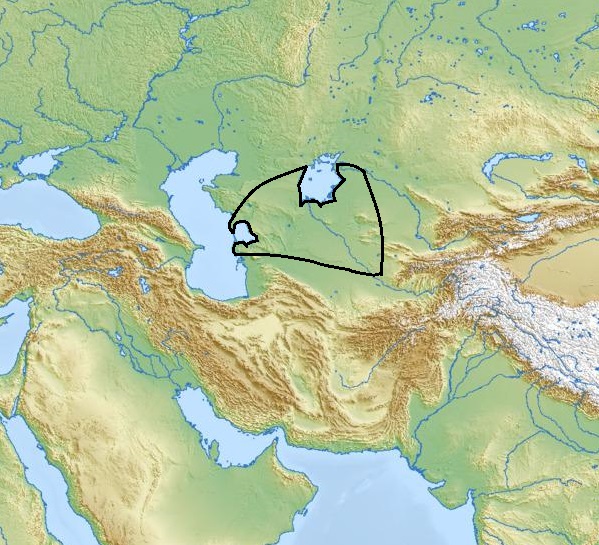Keltiminar on:
[Wikipedia]
[Google]
[Amazon]
 The Kelteminar culture (5500–3500 BCE) was a
The Kelteminar culture (5500–3500 BCE) was a
Tolstov S.P. ''Following ancient Horesm civilization'', Part 2. Ch. 5 (''In Russian'')Rtveladze E. ''Civilizations, nations, cultures of Central Asia'', Tashkent, 2005 (''In Russian'')
{dead link, date=December 2017 , bot=InternetArchiveBot , fix-attempted=yes
''Kelteminar Culture Flourishes in Central Asia''
Archaeological cultures of Central Asia Neolithic cultures of Asia Finno-Ugric archaeological cultures Archaeological cultures in Kazakhstan Archaeological cultures in Turkmenistan Archaeological cultures in Uzbekistan Hunter-gatherers of Asia
 The Kelteminar culture (5500–3500 BCE) was a
The Kelteminar culture (5500–3500 BCE) was a Neolithic
The Neolithic or New Stone Age (from Ancient Greek, Greek 'new' and 'stone') is an archaeological period, the final division of the Stone Age in Mesopotamia, Asia, Europe and Africa (c. 10,000 BCE to c. 2,000 BCE). It saw the Neolithic Revo ...
archaeological culture
An archaeological culture is a recurring assemblage of types of artifacts, buildings and monuments from a specific period and region that may constitute the material culture remains of a particular past human society. The connection between thes ...
of sedentary fishermen occupying the semi-desert and desert areas of the Karakum and Kyzyl Kum deserts and the deltas of the Amu Darya
The Amu Darya ( ),() also shortened to Amu and historically known as the Oxus ( ), is a major river in Central Asia, which flows through Tajikistan, Turkmenistan, Uzbekistan, and Afghanistan. Rising in the Pamir Mountains, north of the Hindu Ku ...
and Zeravshan rivers in the territories of ancient Kazakhstan
Kazakhstan, officially the Republic of Kazakhstan, is a landlocked country primarily in Central Asia, with a European Kazakhstan, small portion in Eastern Europe. It borders Russia to the Kazakhstan–Russia border, north and west, China to th ...
, Turkmenistan
Turkmenistan is a landlocked country in Central Asia bordered by Kazakhstan to the northwest, Uzbekistan to the north, east and northeast, Afghanistan to the southeast, Iran to the south and southwest and the Caspian Sea to the west. Ash ...
, and Uzbekistan
, image_flag = Flag of Uzbekistan.svg
, image_coat = Emblem of Uzbekistan.svg
, symbol_type = Emblem of Uzbekistan, Emblem
, national_anthem = "State Anthem of Uzbekistan, State Anthem of the Republ ...
.
The culture was discovered and first excavated in 1939 by the ''USSR Chorasmian Archaeological and Ethnographic Expedition'' under leadership of S.P. Tolstoy, who first described it. It is named after a site of the same name. The Kelteminar culture was replaced by the Tazabagyab culture.
The Kelteminar people practised a mobile hunting, gathering and fishing subsistence system. Over time, they adopted stockbreeding. With the Late Glacial warming, up to the Atlantic Phase of the Post-Glacial Optimum, Mesolithic
The Mesolithic (Ancient Greek language, Greek: μέσος, ''mesos'' 'middle' + λίθος, ''lithos'' 'stone') or Middle Stone Age is the Old World archaeological period between the Upper Paleolithic and the Neolithic. The term Epipaleolithic i ...
groups moved north into this area from the Hissar (6000–4000 BCE). These groups brought with them the bow and arrow
An arrow is a fin-stabilized projectile launched by a bow. A typical arrow usually consists of a long, stiff, straight shaft with a weighty (and usually sharp and pointed) arrowhead attached to the front end, multiple fin-like stabilizers c ...
and the dog
The dog (''Canis familiaris'' or ''Canis lupus familiaris'') is a domesticated descendant of the gray wolf. Also called the domestic dog, it was selectively bred from a population of wolves during the Late Pleistocene by hunter-gatherers. ...
, elements of what Kent Flannery has called the "broad-spectrum revolution".
Some Russian scientists believe that Kelteminar culture is related to the Pit–Comb Ware culture and belonged to a Finno-Ugric people.Yablonsky L.T. ''Kelteminar craniology. Intra-group analysis''//Soviet Ethnography, Moscow, USSR Academy of Sciences, 1985, No 2. pp. 127-140
The Kelteminar people lived in huge houses (size 24m x 17m and height 10m), which housed the whole tribal community of about 100-120 people. They adorned themselves with beads made of shells. They manufactured stone axes and miniature trapezoidal flint arrowheads. For cooking, they used clay vessels produced without the potter's wheel
In pottery, a potter's wheel is a machine used in the shaping (known as throwing) of clay into round ceramic ware. The wheel may also be used during the process of trimming excess clay from leather-hard dried ware that is stiff but malleable, ...
.
The Kelteminar economy was based on sedentary fishing and hunting.
References
Literature
Tolstov S.P. ''Following ancient Horesm civilization'', Part 2. Ch. 5 (''In Russian'')
{dead link, date=December 2017 , bot=InternetArchiveBot , fix-attempted=yes
''Kelteminar Culture Flourishes in Central Asia''
Archaeological cultures of Central Asia Neolithic cultures of Asia Finno-Ugric archaeological cultures Archaeological cultures in Kazakhstan Archaeological cultures in Turkmenistan Archaeological cultures in Uzbekistan Hunter-gatherers of Asia